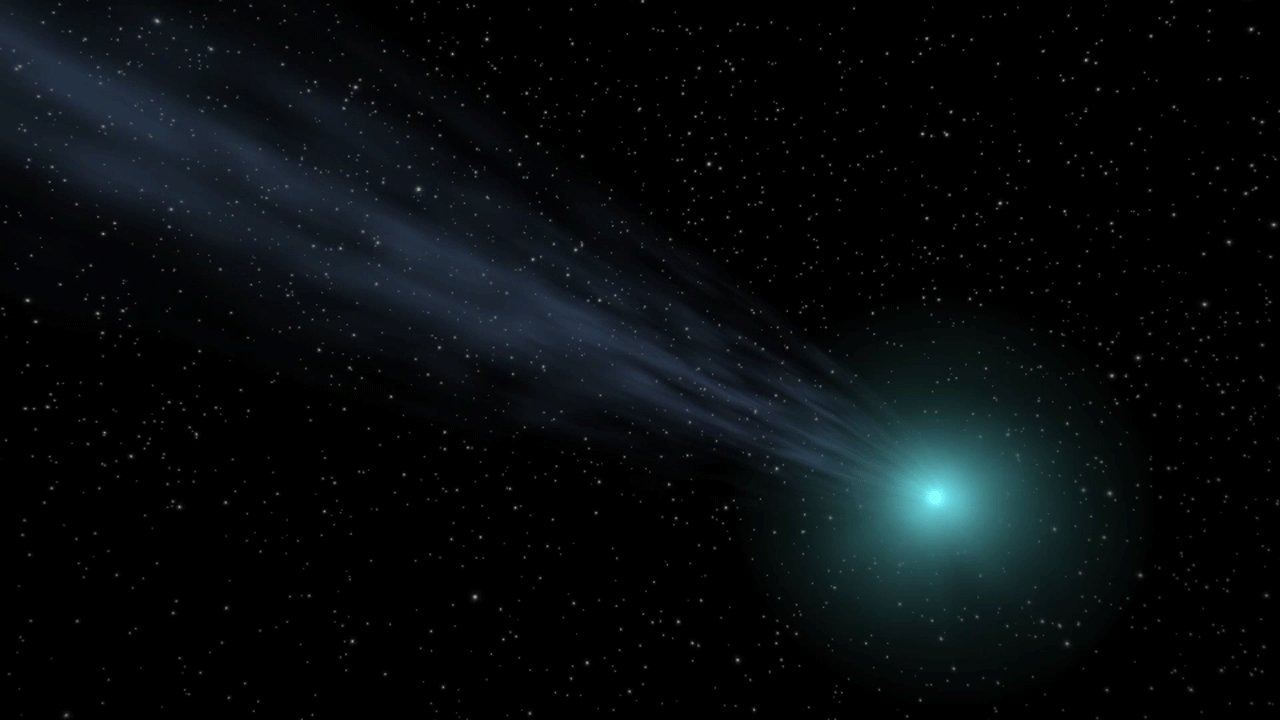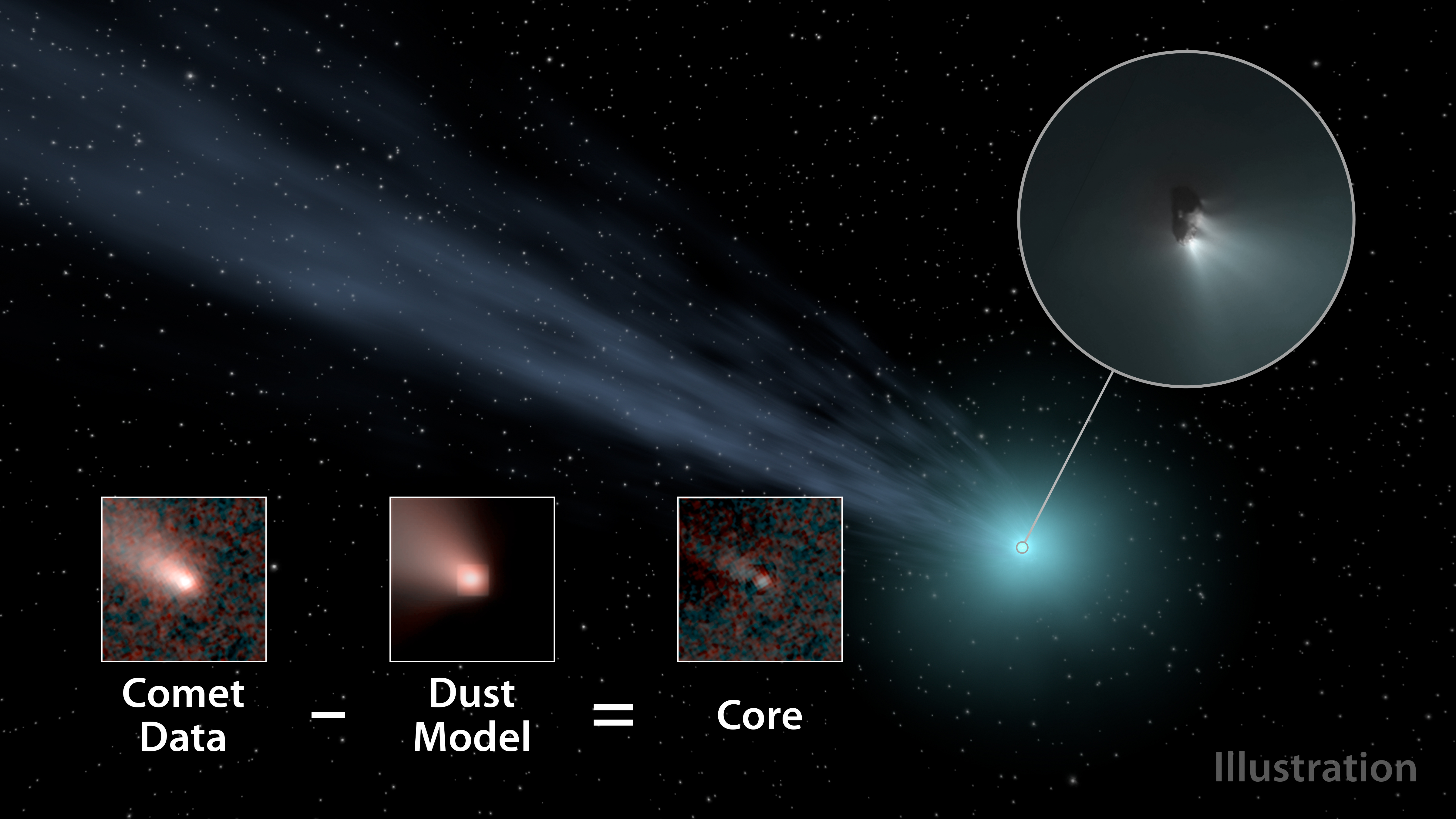Big, Dangerous Comets Are More Common Than Previously Thought

There are a lot more big, potentially dangerous comets zooming through deep space than scientists had thought, a new study suggests.
Astronomers have likely underestimated by a factor of seven the number of "long-period" comets — those that take at least 200 years to complete one lap around the sun — that are at least 0.6 miles (1 kilometer) wide, according to the study.
"Comets travel much faster than asteroids, and some of them are very big," co-author Amy Mainzer, of NASA's Jet Propulsion Laboratory in Pasadena, California, said in a statement. "Studies like this will help us define what kind of hazard long-period comets may pose." [Best Close Encounters of the Comet Kind]
The study team, led by University of Maryland professor James Bauer, analyzed data gathered by NASA's Wide-field Infrared Survey Explorer (WISE) spacecraft.

The data set includes observations of long-period comets and Jupiter-family comets. Long-period comets are thought to arise in the distant Oort Cloud, a spherical shell of icy bodies that begins perhaps 186 billion miles (300 billion km) from the sun, researchers said. The long-period comets that WISE spotted were likely booted inward, toward the sun, by gravitational interactions with other Oort Cloud denizens millions of years ago, the researchers added.
Jupiter-family comets are quite different beasts. They lie relatively close to the sun, completing one lap around the star in less than 20 years. (They are so named because Jupiter's powerful gravity has shaped their orbits.)
Get the Space.com Newsletter
Breaking space news, the latest updates on rocket launches, skywatching events and more!
The WISE data revealed an unexpected abundance of long-period comets, the researchers said. For example, over an eight-month stretch, three to five times more of these objects zoomed by the sun than scientists had predicted.
"The number of comets speaks to the amount of material left over from the solar system's formation," Bauer said in the same statement. "We now know that there are more relatively large chunks of ancient material coming from the Oort Cloud than we thought."
The study team also determined that long-period comets are up to twice as large, on average, as Jupiter-family comets. The size discrepancy is likely a consequence of the Jupiter-family comets' more frequent trips past the sun, the researchers said: Every time these icy wanderers get close to Earth's star, the sun's intense heat drives off water and other volatile substances, which drag dust with them as they jet into space.
"Our results mean there's an evolutionary difference between Jupiter-family and long-period comets," Bauer said.
The WISE spacecraft launched to Earth orbit in December 2009 and successfully carried out an all-sky survey in infrared light. NASA put WISE into hibernation in February 2011 but reactivated the spacecraft two years later to search for asteroids and other near-Earth objects. (Mainzer is the principal investigator for this new mission, which is called NEOWISE.)
The new study, which was published earlier this month in The Astronomical Journal, looked at data the spacecraft gathered during its prime mission, in 2010.
Follow Mike Wall on Twitter @michaeldwall and Google+. Follow us @Spacedotcom, Facebook or Google+. Originally published on Space.com.
Join our Space Forums to keep talking space on the latest missions, night sky and more! And if you have a news tip, correction or comment, let us know at: community@space.com.

Michael Wall is a Senior Space Writer with Space.com and joined the team in 2010. He primarily covers exoplanets, spaceflight and military space, but has been known to dabble in the space art beat. His book about the search for alien life, "Out There," was published on Nov. 13, 2018. Before becoming a science writer, Michael worked as a herpetologist and wildlife biologist. He has a Ph.D. in evolutionary biology from the University of Sydney, Australia, a bachelor's degree from the University of Arizona, and a graduate certificate in science writing from the University of California, Santa Cruz. To find out what his latest project is, you can follow Michael on Twitter.









